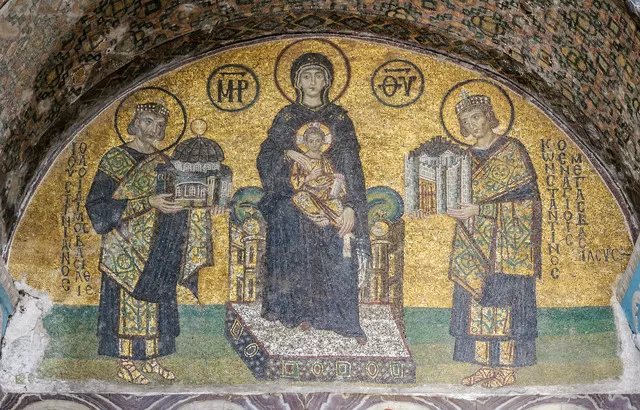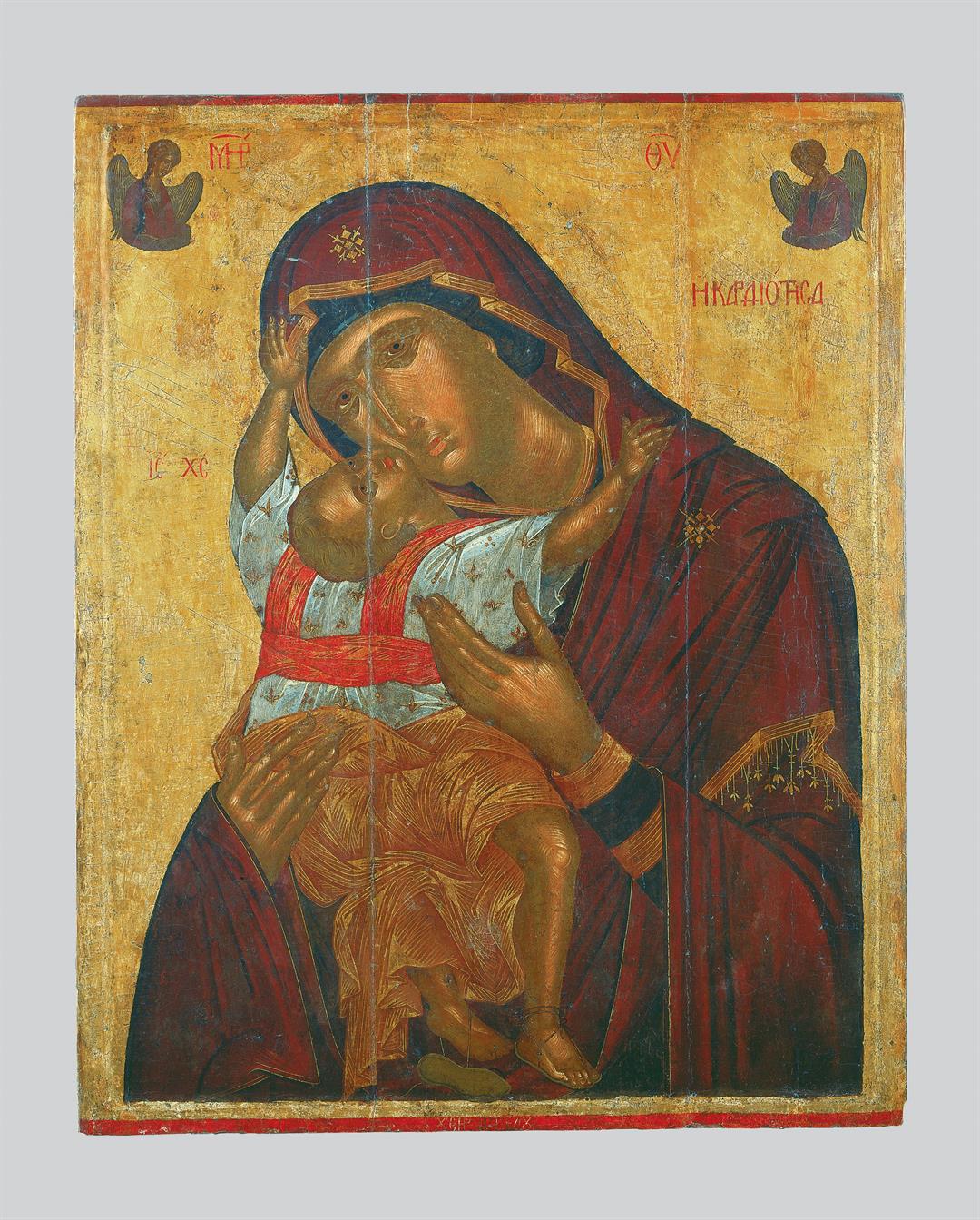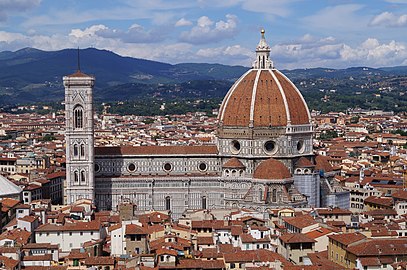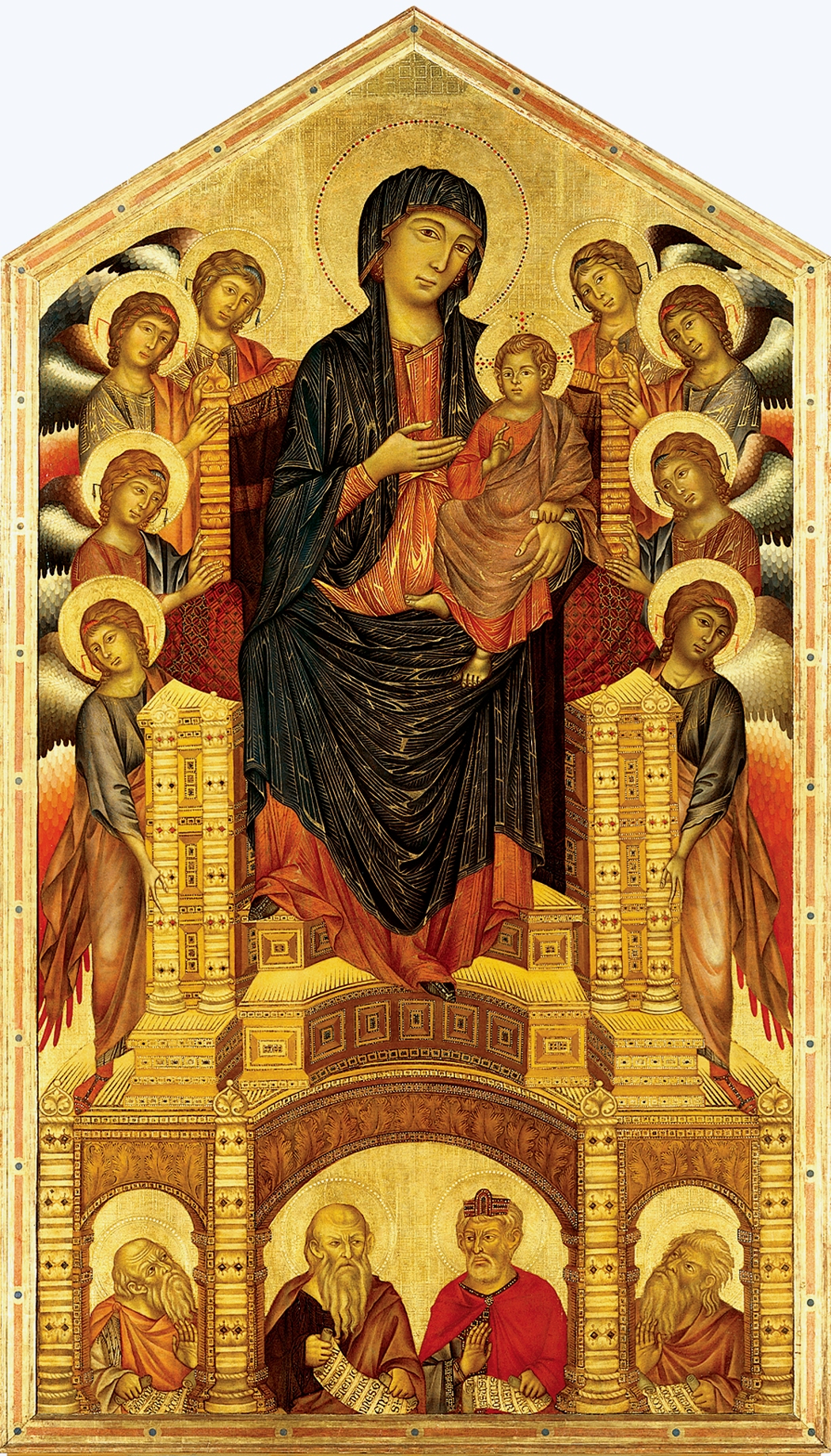Fourteenth Century Italian Art
1/23
There's no tags or description
Looks like no tags are added yet.
Name | Mastery | Learn | Test | Matching | Spaced |
|---|
No study sessions yet.
24 Terms
The Midlevel Period (Middle ages)
Subject matter in the late
The medieval period was overwhelmingly religious.
Art was expensive to commission.
The Christian Church and royal/imperial families were
primary patrons.
The medieval period began…
With the fall of the Roman Empire
marked by the rising power of the Church, which filled a void in administration, organization
and power.
Manorialism (Feudalism)
The way Medieval society was organized in three groups:
the nobility (landowners),
the clergy,
vassals
serfs/peasants (those who worked and/or protected the land in exchange for food, shelter and protection from the nobles).
In the Medieval period, emphasis was placed on…
God and spirituality
What was de-emphasized in the medieval period?
The individual and/or the body was de-emphasized if not reviled.
The end of the Medieval period is marked by
the rise of guilds and a merchant class, which became the middle class.
Gothic Cathedrals
Long pointed arches
flying exterior buttresses
Ribbed vaults
spires


Virgin and Child flanked by Emperor Justinian and Emperor Constantine
c. 944 C.E.
4.9 x 3 meters.
Basilica of Hagia Sophia.
Byzantine Art Style
Long slender fingers
Angular faces
Gold backgrounds
Flattened design

Byzantine icon of the Virgin and Child,
ca. 1400.
Icons
“images” in Greek
are small portable paintings depicting Christ, the Virgin, or saints (or a combination of
all three)
Early 14th Century Italian Art
The Late Middle Ages
By the 13th century, northern and central Italy had become the most literate society in the world (more than 1/3 of the male population could read).
The Black Plague (Bubonic Plague)
reached Italy c. 1348,
killed 30-60% of all people in Western Europe within five years (50 million total).
It killed about 50% of Italians.
The late Middle Ages/early Renaissance was…
a period of populist religious reform, including the formation of mendicant (begging) religious orders.
Art at this time was…
made on commission by wealthy individuals or civic
or religious institutions (guilds, government bodies, religious orders).Most artists worked collaboratively in workshop studios where apprentices learned from a master.
Naturalism
The subject is depicted as it appears in nature.
The goal of naturalism is often to invoke a reaction of empathy in the viewer, to create an extension of the viewer’s world on the painted canvas or sculpted surface.
Italian Gothic
the use of groin vaults,
semi-circular arches,
large pillars,
columns,
tall towers
rolls of arches called arcades.


Piazza della Signoria with Palazzo della Signoria a.k.a. Palazzo Vecchio (the town hall),
Florence.
1299-1310

Cimabue
Madonna and Child Enthroned.
Perhaps intended for the Church of Santa Trinita in Florence
ca. 1280
tempera on wood panel.
12’ tall
Giotto di Bondone
Apprentice of Cimabue
Reinvented the Byzantine art style
Worked for Franciscans, made art of Saint Francis of Assisi

Giotto, Virgin and Child Enthroned
ca. 1305-10,
tempera on wood panel. painted for the Ognissanti Franciscan church in Florence
Saint
Buon fresco
good or true fresco
Water-based paints applied to wet plaster, which becomes chemically bonded
Giornata
a day’s work
amount possible to complete before the plaster dries.

Giotto,
Arena (Scrovegni) Chapel, Padua.
1305-6,
Fresco.
Life of the Virgin, Life of Christ, Virtues and Vices